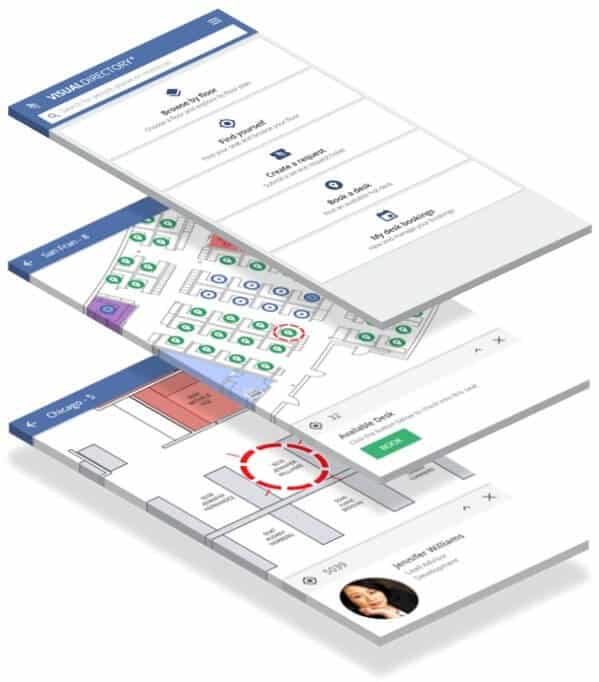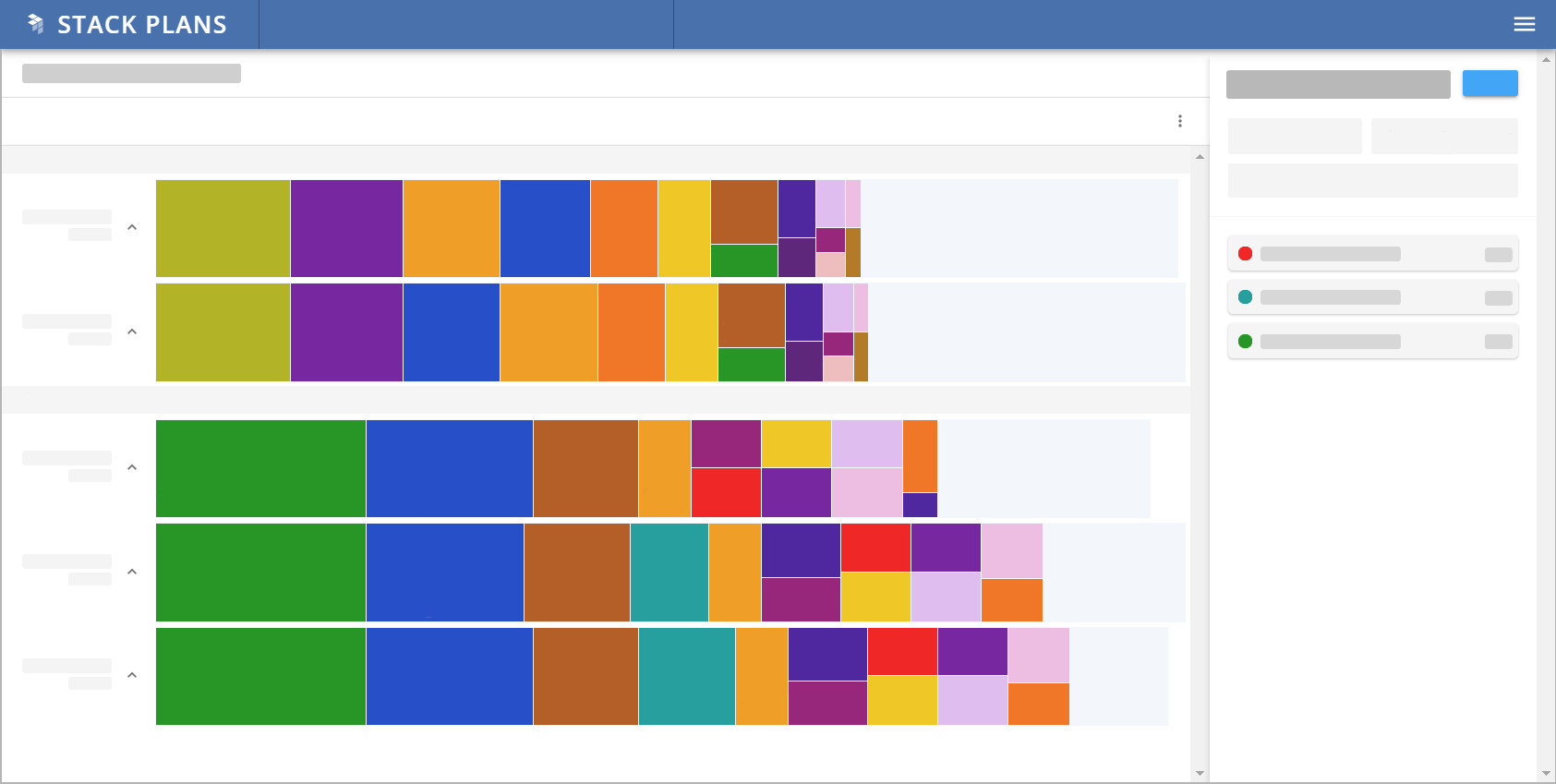Optimizing Workspaces with Block and Stack Planning

Block and stack planning tools enable facility managers to optimize their workplace based on tangible data rather than educated guesses.
Facility managers know all too well that reconfiguring seating plans to fit post-COVID-19 safety standards is a lot more involved than rearranging furniture. That’s why block and stack planning has become a crucial part of many companies’ return-to-office strategies.
There are several ways facility managers can leverage this technology to optimize their workplace. In this article, we look at how FMs can make the most of block and stack planning to create a better work environment for everyone.
What is block and stack planning?
Block and stack planning—or stack plans—refers to a set of core digital tools facility professionals use to optimize the properties they manage. With this technology, facility managers can plan more efficient workplaces, using tools that provide the building blocks to make modifying existing floor plans more efficient.
Block and stack planning also assists facility managers with responsibilities like:
- Grouping teams and departments quickly to increase efficiency when planning moves
- Rearranging teams and departments from one floor or building to another
- Creating plans that grow with your company
 Stack plans are especially helpful if you’re managing multiple properties with multiple floors, as things can get complicated quickly! Rather than play a not-as-fun game of Tetris with your desks and shared spaces, block and stack planning helps you create seating plans that are built for long-term growth, as entire teams and departments can be treated as one group.
Stack plans are especially helpful if you’re managing multiple properties with multiple floors, as things can get complicated quickly! Rather than play a not-as-fun game of Tetris with your desks and shared spaces, block and stack planning helps you create seating plans that are built for long-term growth, as entire teams and departments can be treated as one group.
Plus, with increased health concerns surrounding the pandemic, block and stack planning helps facility managers ensure they’re creating a workplace that is efficient and productive, and safe. For example, because block and stack planning technology is part of your integrated workplace management system (IWMS), you can build upon your plans by using scenario planning features to view iterations of your floor plan based on your building’s specific occupational data and your company’s needs.
A tool like OfficeSpace Stack Plans helps facilities managers improve their space utilization by making the process more efficient.
Three ways facility managers can use block and stack planning to optimize their workplace
Planning a department move or a floor plan overhaul is a big undertaking.
Let’s look at a few ways FMs can leverage block and stack planning to create a workplace that isn’t just great for the present moment (or during times of physical distancing and enhanced sanitizing precautions), but for the long term as well.
1. Visualize your teams across floors and buildings
It’s one thing to make changes to your floor plans based on what you think might work, but it’s another thing entirely to make changes based on where your teams are actually located.
To make impactful improvements to your office, it’s crucial to understand what’s happening across your floors and buildings. Without knowing where things stand from an occupational perspective will make it difficult to implement adjustments or reconfigurations that actually benefit your organization.
With block and stack planning, facility managers can enjoy benefits such as:
- Visualizing departments across your floor plan regardless of employee location
- Setting up your teams as groups in order to see the best ways to organize a floor plan based on department planning or other company goals
- Easily viewing where a given team is located, even if it’s across multiple floors or locations
In short, block and stack planning takes the guesswork out of adjusting your seating plans by providing groups of staff to organize in one fell swoop instead of having to address each employee in a different way. This way, you know you’re making changes based on the needs of employees as well as your company’s resources.
2. See how teams are distributed throughout your portfolio
With companies adopting a hybrid workforce approach and many undergoing an office layout reconfiguration, it can be tricky to know where everyone is at any given time.
Block and stack planning makes it simple to view your current floor plans and see where your employees are working—without you having to be physically present. If you’re planning to move departments around, you can view your portfolio quickly and easily.
This is especially helpful for teams that work in different states or countries and have multiple properties.

3. Find and make better use of unused space
Identifying and determining how to make the most of unused space might not always be as intuitive as it seems. Even if your floor plan is simple or is only one floor, the best way to configure your space may not always be the most obvious.
Not only is unused space detrimental to workplace efficiency, but it’s harmful to your bottom line, too. In New York, the average office occupancy cost per square foot is about $170, according to Statista. If your office has a lot of unused or misused space—whether spread across several buildings or even just one—those costs can add up quickly.
Stack Plans helps facility professionals effortlessly reorganize department allocations across the floors and buildings within your real estate portfolio. In other words, you can make more efficient, impactful decisions about your space that fits the needs of your organization easily. You may discover uses for your space you didn’t realize were possible, especially if you also leverage scenario planning to try out different configurations once you’ve made initial decisions with stack planning.
Create a safer workplace with OfficeSpace Software’s newest features
Facility professionals are responsible for so many moving parts. Those responsibilities have only grown and evolved with the pandemic. Making facility management software an integral part of your office planning and optimizing will save your time, money, and sanity.
OfficeSpace Stack Plans helps facility managers restructure your office with data-backed insights and guidance and provides the resources you need to make the most efficient decisions about your properties.
Want to learn more about how you can use OfficeSpace to optimize your office? Reach out to our team, and we’ll show you how you can use OfficeSpace to create a better workplace.
Photos: y LinkedIn Sales Navigator, OSS



